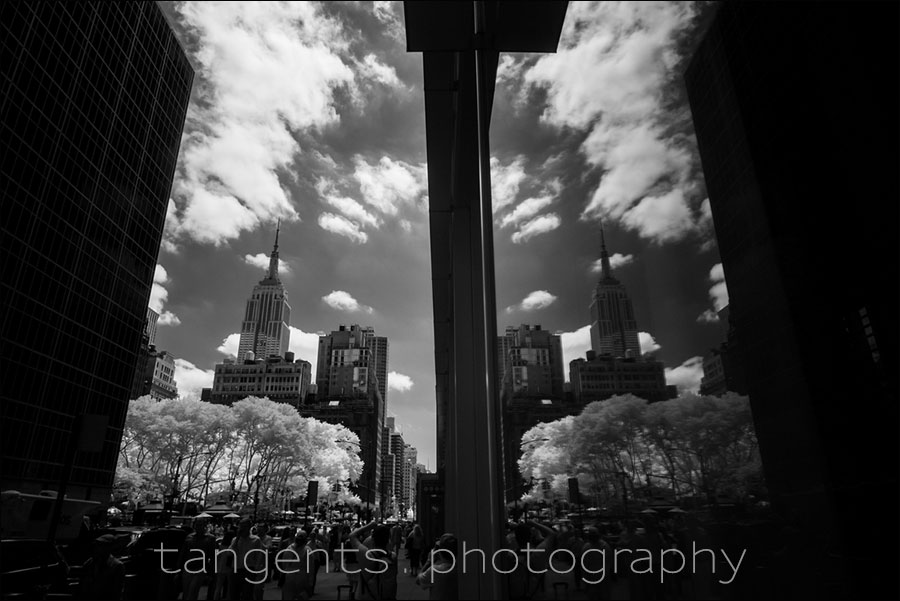
New York infrared B&W photos
It’s Summer again and (intermittently) sunny outside, and the trees are green … or snow-white as in this B&W infrared photo. The contrasty tones, and the dark skies with bright foliage are typical of B&W infrared photographs. Last year, in this article on mirrorless cameras and B&W infrared, I mentioned how I had searched for a Fuji camera & lens combination that worked without giving me a central hot-spot. I found the Fuji 14mm f/2.8 lens (B&H / Amazon) worked beautifully on my infra-red converted Fuji X-E2, without that hot-spot in the middle of the photo. The 14mm lens also gave me the necessary wide sweeping view that I wanted for B&W infrared cityscapes.
Here are a collection of images shot recently, with that infrared converted Fuji X-E2 and the Fuji 14mm lens:
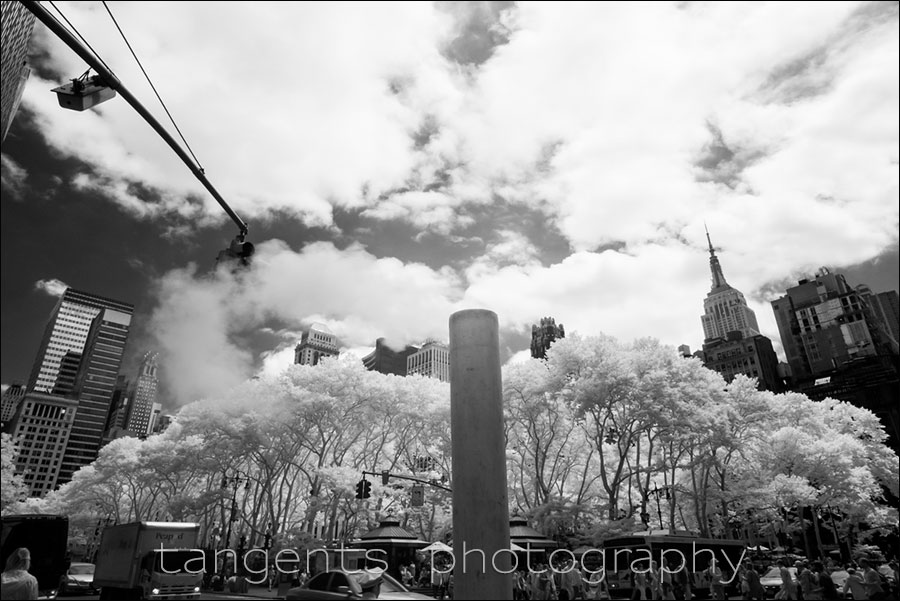
- camera: Fuji X-E2 (conversion by Life Pixel)
- lens: Fuji 14mm f/2.8 lens (B&H / Amazon),
- with Deep infrared filter (from Life Pixel)
The B&W infrared images tend towards the surreal – which works to our advantage. Here the white steam from one of these roadworks pipes appear to blend with the clouds … but are in front of the traffic light. This makes the traffic light appear simultaneously more distant.
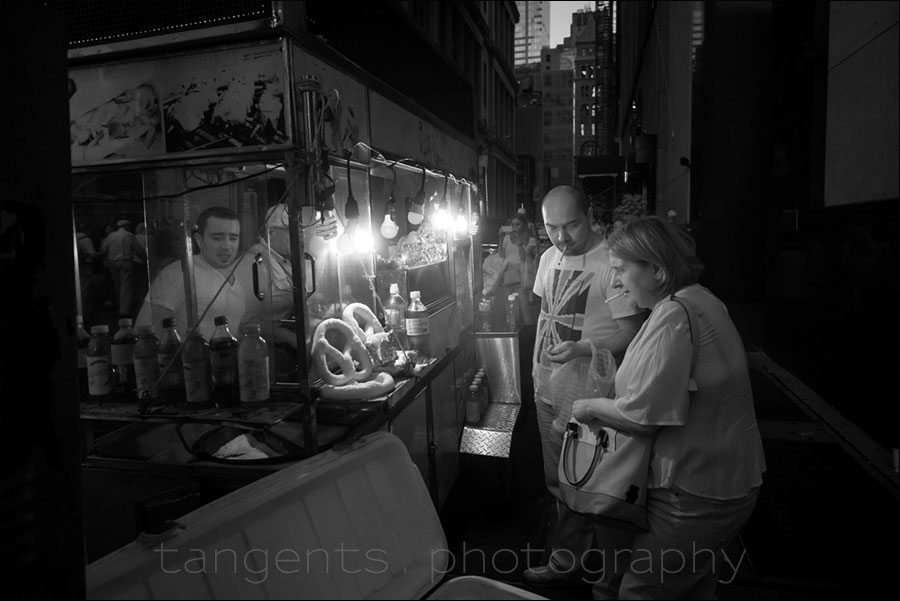
- camera: Fuji X-E2 (conversion by Life Pixel)
- lens: Fuji 14mm f/2.8 lens (B&H / Amazon),
- with Deep infrared filter (from Life Pixel)
This photograph was taken during dusk when there is less infrared light to be found because the sun has started to go down. Except in this case, the heat from the food cart provides a ghostly (infrared spectrum) light compared to the surroundings, which then drops into comparative darkness. I wish I had taken a similar photo with my iPhone to show how bland it looked as a color image. None of this dramatic light.

- camera: Fuji X-E2 (conversion by Life Pixel)
- lens: Fuji 14mm f/2.8 lens (B&H / Amazon),
- with Deep infrared filter (from Life Pixel)
Sunlight reflecting off one of the many windows in Manhattan, gave this oddly structured highlight on this building, revealing just the face of the person in the billboard advert as the rest of the building drops into dark shadows.
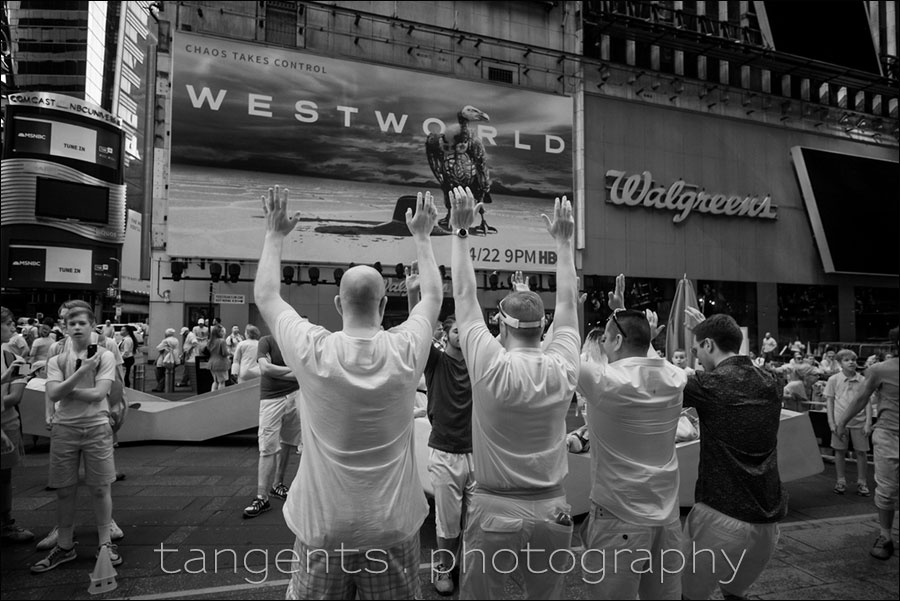
- camera: Fuji X-E2 (conversion by Life Pixel)
- lens: Fuji 14mm f/2.8 lens (B&H / Amazon),
- with Deep infrared filter (from Life Pixel)
Times Square tourists participating in one of the street performers’ acrobatic antics, incongruously seem to be praising the Westworld billboard in this photograph. The ghostly white skin tones that B&W infrared render helps make this even more surreal.
Next up, three images taken in and around Bryant Park in New York. Two scenic photos, and then also this photo of the boule players in the park. You can just barely make out the heavy metal ball flying through the air.
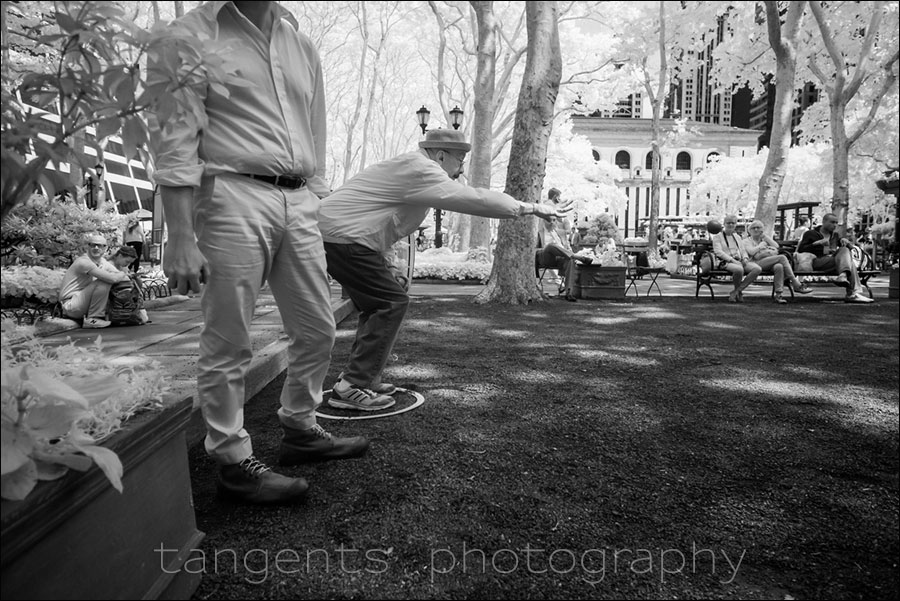
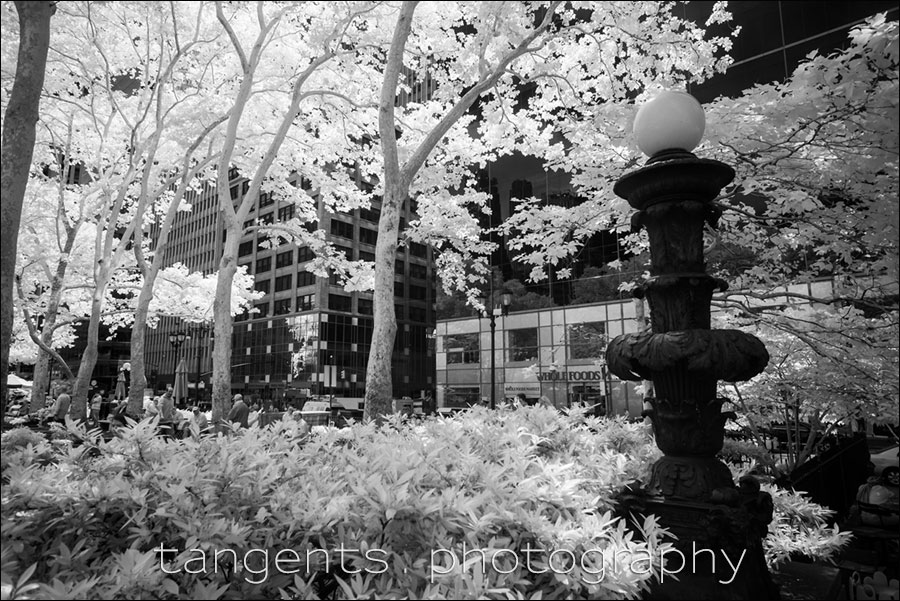
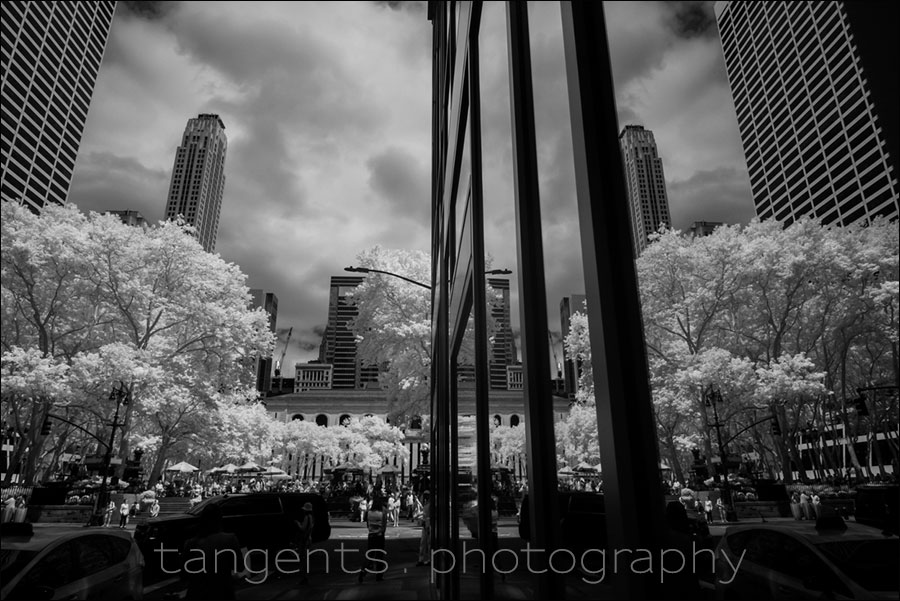
- camera: Fuji X-E2 (conversion by Life Pixel)
- lens: Fuji 14mm f/2.8 lens (B&H / Amazon),
- with Deep infrared filter (from Life Pixel)
The next two photographs show the architecture surrounding the area around the Ground Zero Memorial in New York.
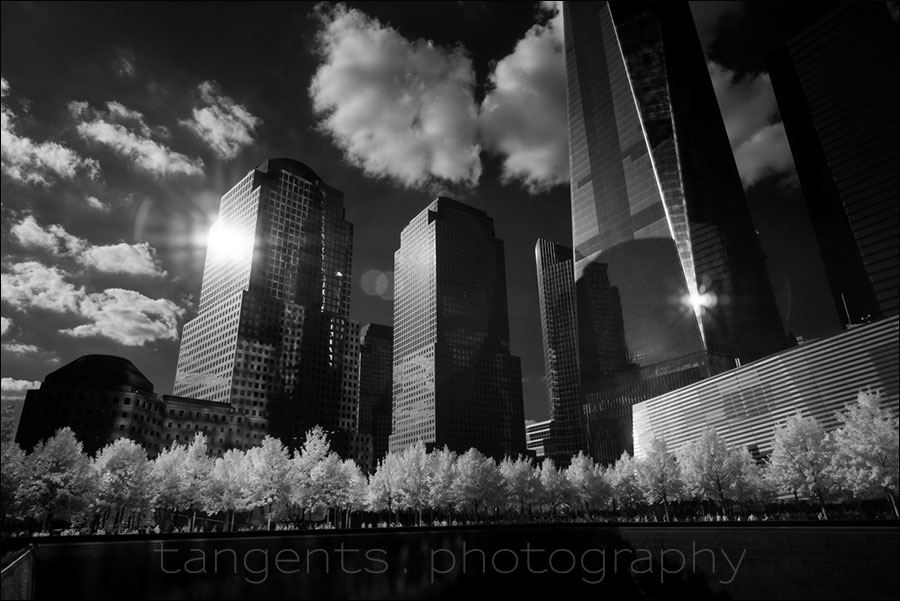
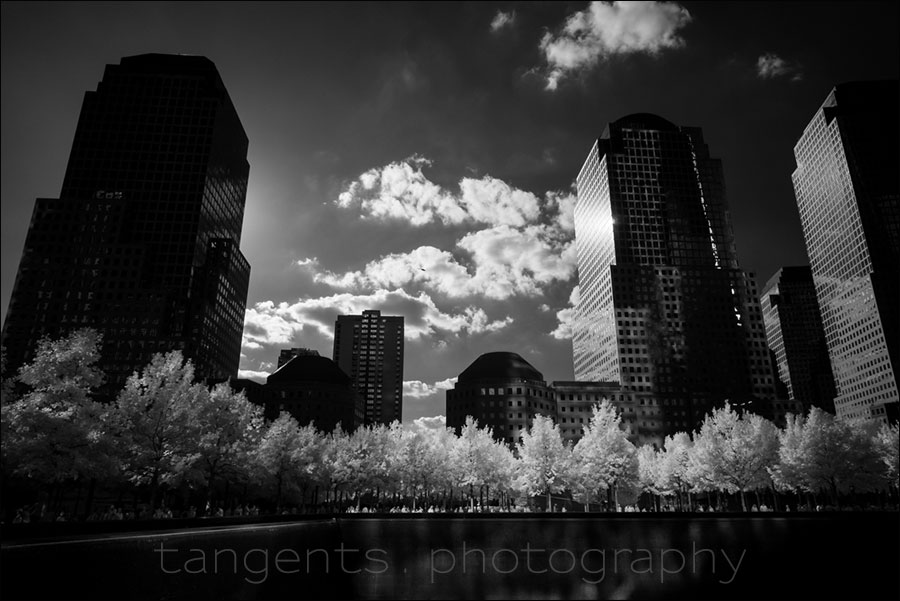
- camera: Fuji X-E2 (conversion by Life Pixel)
- lens: Fuji 14mm f/2.8 lens (B&H / Amazon),
- with Deep infrared filter (from Life Pixel)
Related articles
- Mirrorless cameras and B&W infrared photography
- New York cityscapes – B&W infrared photographs
- B&W infrared photography – Urban landscapes
- Other examples of digital B&W infrared photography
- Gallery: Infra-Red B&W Photos of New York City
Converting your camera for infrared capture
If the look of infrared photography appeals to you, then you can have your camera converted by Life Pixel. On their website they list all the options, as well as which cameras are suitable, and which lenses might be a problem. There’s a ton of useful information on infrared photography! Check them out.
What software are you using to process the Fuji infrared images? I would likely be using Lightoom. Would that work?
How did you decide on the Deep B&W choice? Which of the other choices should I consider? The many choices certainly complicate the process.
You could use Lightroom to process the RAW files. I still use Bridge, which has the same engine.
I wanted the Deep Infrared conversion because I just didn’t really like the images that I had seen of the milder conversions that allow much of the visible spectrum still through. It’s a personal choice.
I always get amazed by the color of the leaves in infrared B&W photos! Great pictures, love the third one, with the billboard!
Newbie question, after the deep infrared conversion the raw files are still in color?
Adjusting and processing the RAW files from the infra-red B&W camera
The images straight out of this infra-red B&W camera have that overall Magenta coloration to it. When I use the camera, I have the Picture Style set to Monochrome, with the Contrast jacked up high. This gives me a much better idea of the potential of the infra-red B&W scene, than a Standard Picture Style would have.
In the end, I always adjust each RAW file individually – pushing the Contrast; pulling the Whites; bumping the Clarity higher. Of course, I pull the Saturation down to zero so that the image is B&W. Then I also adjust the Exposure as necessary. Whatever is needed to make the photograph more punchy and eye-catching.
Interesting leaves would be so white. They don’t appear to be so warm.
Chlorophyll reflects infrared, hence leaves show up as white.